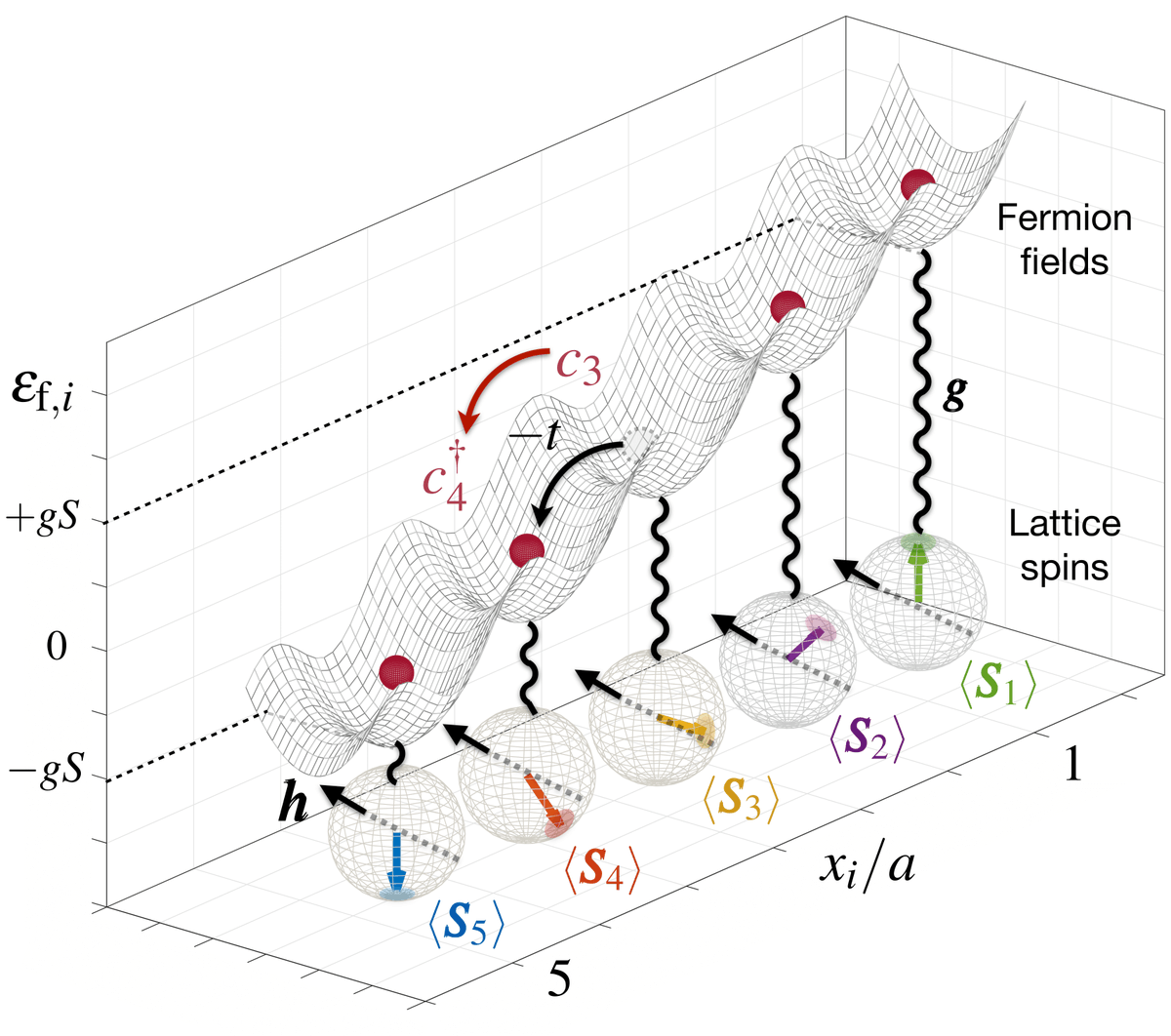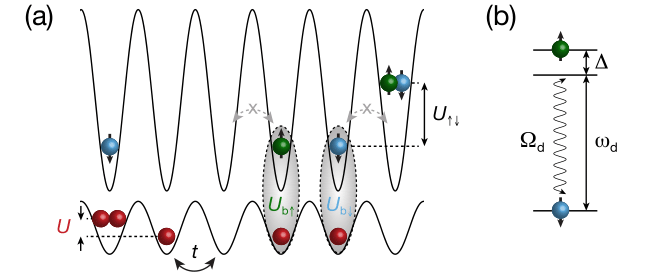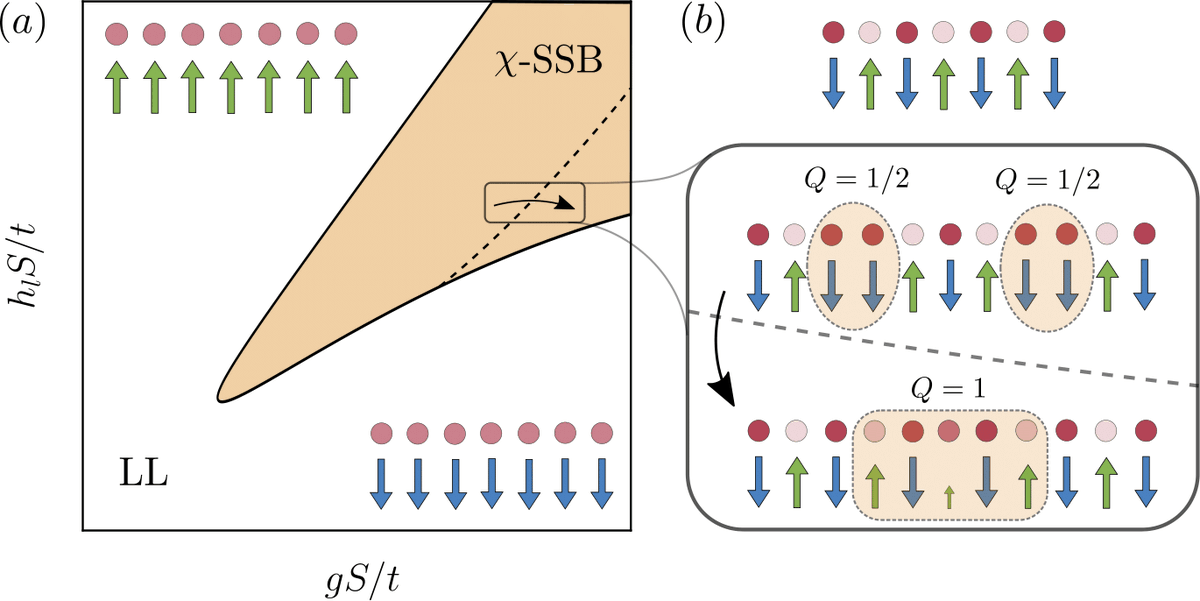Our last paper on quantum simulations of high-energy physics is now on arxiv:
https://arxiv.org/abs/2008.02045
In this work, we propose how certain open questions in particle physics could be adressed using cold-atom experiments.
https://arxiv.org/abs/2008.02045
In this work, we propose how certain open questions in particle physics could be adressed using cold-atom experiments.
First of all, I would like to thank the Madriz-Barna-Munich collaboration. I really enjoyed working with them on such an interdisciplinary topic, where I even got to learn a bit about QCD.
@adauphin4 @ICFOnians @unicomplutense @LMU_Muenchen @MCQST_cluster
@adauphin4 @ICFOnians @unicomplutense @LMU_Muenchen @MCQST_cluster
But let's get down to business. It is a known fact that quarks, the building blocks of matter, do not appear as independent particles in normal conditions. They are usually confined together with other quarks forming composite objects, such as protons or neutrons.
I say in normal conditions because in extreme situations, such as inside the dense core of neutron stars, or just a few moments after the Big Bang, when the temperature of the universe was huge, quarks can deconfined and form a new phase of matter called the quark-gluon plasma.
The existance of this exotic phase has been confirmed experimentally in particle accelerators involving the collision of heavy ions, which reproduce the temperature and density conditions of the early universe. However, there are still many unsolved questions to this problem.
This is because, despite the huge success of the Standard Model explaining the properties of fundamental particles (think about the Higgs boson, predicted almost 50 years before its descovery), solving the corresponding equations is actually hard. Very hard.
It is so hard that even the best supercomputers are unable to answer the following question: should we think about the change between confined and deconfined quarks as a process where the protons and neutron melt, similar to a solid to liquid transition?
And this is where cold atoms enter the story. In order to understand processes at the highest possible temperatures we want to use one of the coldest objects in the universe.
Cold atoms are gases that can be trapped and cooled dawn in the lab to almost zero degrees using lasers and magnetic fields. In that regime, one can engineer these atomic systems to mimic the properties of any other quantum system, including fundamental particles such as quarks.
This is the essence of a quantum simulator, that can be thought of as a specific purpose quantum computer: using a controllable quantum setup you can obtain information about more complicated quantum systems, a more efficient approach than ussing a classical computer.
As you can imagine, these experiments are not simple. Despite the huge technical progress in the recent years, we are still far from being able to quantum simulate the full Standard Model. But again, there is no fundamental reason that prevents it, so we remain optimistic.
In the meantime, we propose an alternative approach: instead of simulating the full problem, we consider simpler models that capture some of the most interesting properties of quarks, simple enough so they can be investigated with current quantum simulators.
In particular, we study a one-dimensional model where the interactions between particles describing (fermionic) matter are mediated by other (bosonic) particles.
The situation is similar in particle physics, where the quarks interact by interchanging gluons. This interaction is simpler in our model, allowing for its quantum simulation using current technology. We propose how to do it with atomic mixtures 

Despite the differences, we observe many similarities with the physics of quarks:
(1) We find particles whose charge is a fraction of the proton charge, similar to quarks.
(2) In a certain regime, these quark-like particles are confined forming composite objects.
(1) We find particles whose charge is a fraction of the proton charge, similar to quarks.
(2) In a certain regime, these quark-like particles are confined forming composite objects.
(3) There is a phase transition to a deconfined regime where these particles are now independent and free.
(4) This transition is associated to the restoration of a so-called chiral symmetry.
(4) This transition is associated to the restoration of a so-called chiral symmetry.
The last point is relevant since the breaking of chiral symmetry contributes to the mass of particles, similar to the Higgs mechanism, and it is believed to play a role in confinement. However, whether these two occur simultaneously or not is still debated.
In summary, we hope to learn more about the physics of fundamental particles by performing quantum simulations on simpler models, where qualitatively similar phenomena can be studied to a much greater detail.

 Read on Twitter
Read on Twitter




